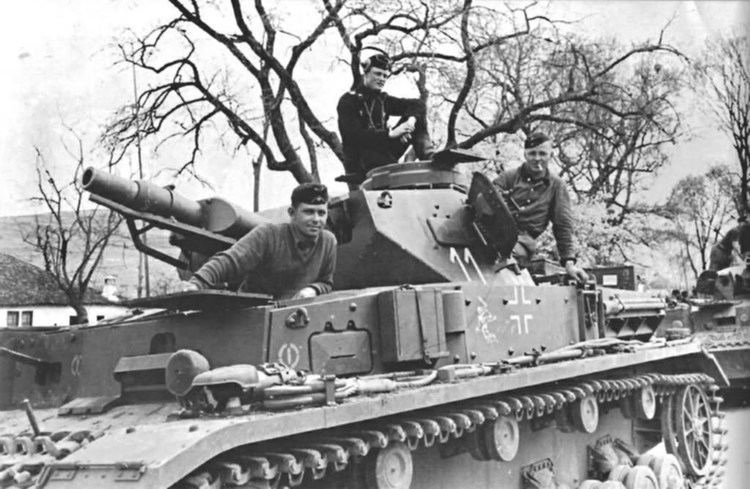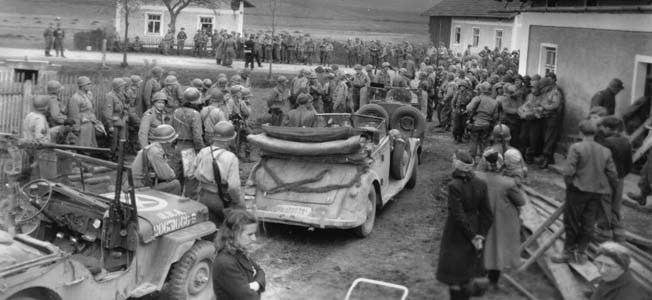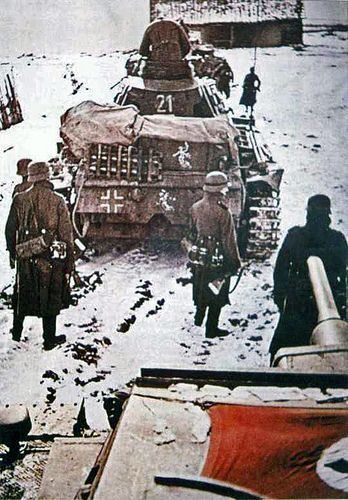Type Panzer | Branch Army | |
 | ||
Active 1 August 1940 – 8 May 1945 | ||
The 11th Panzer Division (English: 11th Tank Division) was an armoured division in the German Army, the Wehrmacht, during World War II, established in 1940.
Contents

The division saw action on the Eastern and Western Fronts during the Second World War. The 11th Panzer Division did not participate in the war until the invasion of Yugoslavia, fought in the Soviet Union from 1941 to 1944 and, in the last year of the war, in southern France and Germany. The formation's emblem was a ghost.

History

The 11th Panzer Division was formed on 1 August 1940 from the 11th Schützen-Brigade and the Panzer Regiment 15 removed from the 5th Panzer Division and elements of the 231st Infantry Division, 311th Infantry Division and 209th Infantry Division. Most of its members were from Silesia.

The 11th Panzer Division saw action for the first time in the invasion of Yugoslavia in April 1941, passing through Bulgaria, it arrived in Belgrade and assisted in the capture of that city.
The division was then sent to the Eastern Front where it was part of the Army Group South. It participated in the battle of Kiev and later took part in the Battle of Moscow. At the Battle of Moscow the 11th Panzer Division had its legendary encounter with Panfilov's Twenty-Eight Guardsmen. The division was engaged in retreat and defensive operations after the Soviet counter offensive in December 1941. The 11th Panzer Division's advance finally came to a cease due to the strong resistance of the 8th Guards Motor Rifle Division and the 78th Rifle Division. Harsh weather conditions were also a factor. It was finally The 11th Panzer Division was part of Case Blue from June 1942 onward, participating in the capture of Voronesh and the drive towards Stalingrad. It avoided being entrapped with the 6th Army in the city but suffered substantial losses during the winter of 1942-43.
It was engaged in the failed relieve attempt on Stalingrad and than participated in the defence of Rostov, which allowed the German troops retreating from the Caucasus to escape. In July 1943, it participated in the battle of Kursk and the defensive operations and retreat that followed the German failure. It was entrapped in the Korsun-Cherkassy Pocket in February 1944 and almost completely destroyed in the break out of the pocket. The division was withdrawn from the front and sent to Bordeaux, France after receiving personnel drawn from the 273rd Reserve Panzer Division.
After being stationed in the Toulouse area, the division was moved to a section of the Rhône in July 1944. When the Allies invaded southern France in August 1944, it was forced to retreat via the Rhône corridor, reaching Besançon. Later entering combat in Alsace, it helped in the defence of the Belfort Gap after going back to the Saar. In December 1944, the division fought as part of the Army Group G.
At the beginning of the battle of the Bulge, which it participated in, the division had 3,500 personnel, including 800 infantry. Following the failure of the German offensive, the 11th Panzer Division entered combat in Saarland and Moselle and fought at Remagen with 4,000 soldiers, 25 tanks and 18 guns that still remained, but was expelled from the region by the advancing US forces.
It was then shifted to the southern sector of the front, with its forces stationed in and encircled in the Ruhr. The 11th Panzer Division retreated south east, eventually surrendering to US forces in the area around Passau on 2 May 1945.
Commanders
The commanders of the division:
Orders of Battle
The organisation of the division:
